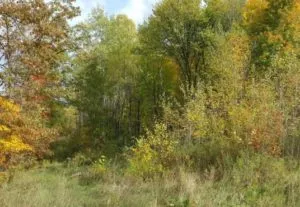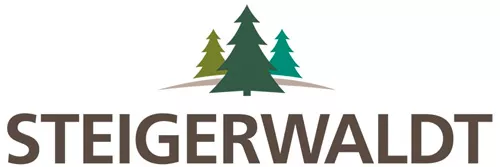Understanding Tree & Landscape Appraisal
by: Ed Steigerwaldt
May 2021
 In the appraisal and right of way field, one of the most difficult appraisal assignments is estimating the value of vegetation to be acquired. This is typically trees and landscaping. Many right of way projects require taking out trees on fee-owned land or on those with easements. In reality, many of the appraisal assignments are “partial acquisitions” which, in the appraisal field, are often very difficult. Trees and landscape are part of the entire real estate package and, in most cases, they should be appraised this way. This is contradictory to the opinion of many arborists and appraisers who advocate that tree value is the cost to replace. When mature trees are part of the right of way acquisition, the cost to replace them can run into the $10k to $50k range or more. Value is based on the concept of “willingness to pay” or market value. Cost is just that — the cost to place a specific item. Cost and value are two entirely different things. The best way to keep this in perspective is to remember the unit rule for appraising: “The sum of the parts cannot exceed the whole.” Well-thought-out and supported appraisals help both right of way professionals and property owners understand how values are derived. In appraisals or direct negotiations, it is helpful to ask what price difference the trees or landscape items would make if the property was sold or how much less the property would be worth without the plants being appraised. The best way to show this is to begin with overall property value. If the property just sold for $200k and the home is separately valued at $150k, then all of the trees and land have a total value of $50k. If similar lots with minimal tree cover sell for $40k, then all trees on the lot contribute $10k or $500 each. This is without consideration for landscaping.
In the appraisal and right of way field, one of the most difficult appraisal assignments is estimating the value of vegetation to be acquired. This is typically trees and landscaping. Many right of way projects require taking out trees on fee-owned land or on those with easements. In reality, many of the appraisal assignments are “partial acquisitions” which, in the appraisal field, are often very difficult. Trees and landscape are part of the entire real estate package and, in most cases, they should be appraised this way. This is contradictory to the opinion of many arborists and appraisers who advocate that tree value is the cost to replace. When mature trees are part of the right of way acquisition, the cost to replace them can run into the $10k to $50k range or more. Value is based on the concept of “willingness to pay” or market value. Cost is just that — the cost to place a specific item. Cost and value are two entirely different things. The best way to keep this in perspective is to remember the unit rule for appraising: “The sum of the parts cannot exceed the whole.” Well-thought-out and supported appraisals help both right of way professionals and property owners understand how values are derived. In appraisals or direct negotiations, it is helpful to ask what price difference the trees or landscape items would make if the property was sold or how much less the property would be worth without the plants being appraised. The best way to show this is to begin with overall property value. If the property just sold for $200k and the home is separately valued at $150k, then all of the trees and land have a total value of $50k. If similar lots with minimal tree cover sell for $40k, then all trees on the lot contribute $10k or $500 each. This is without consideration for landscaping.
The above example is on a residential parcel, but remember that appraisals should be based on the highest and best use (HBU) of a property. This is the use that is legal, physically possible, economically feasible and maximally productive. Examples of HBU are commercial, residential, timber production, industrial or residential. Trees on a tract with a HBU of timber production should be valued as timber trees, and residential trees should be valued by their contribution to overall property value. A good tree appraisal begins by first determining HBU and then overall property value. In the case of residential property, real estate brokers, appraisers and tax assessors can assist you in arriving at overall property value. Next, separate land and improvement values as we did in our example. Once you have the value of land with trees, you can estimate what value the trees contribute. Two surveys completed by real estate brokers and real estate appraisers show that trees and landscape can contribute 10 to 25 percent of land value. Both of these surveys are presented in a book by Steigerwaldt Land Services, Inc. titled, “A Practical Guide to Tree Appraisal.” Once overall tree and landscape values are established, the next step would typically be to allocate the values to specific trees based on their species, size, condition and location. Typically, tall trees in excellent front yard positions contribute the highest value. The last step is to check your value for reasonableness. Does the tree value make sense in light of overall property value? If you have a sensible, supportable result, your appraisal will withstand the review it will likely get.







